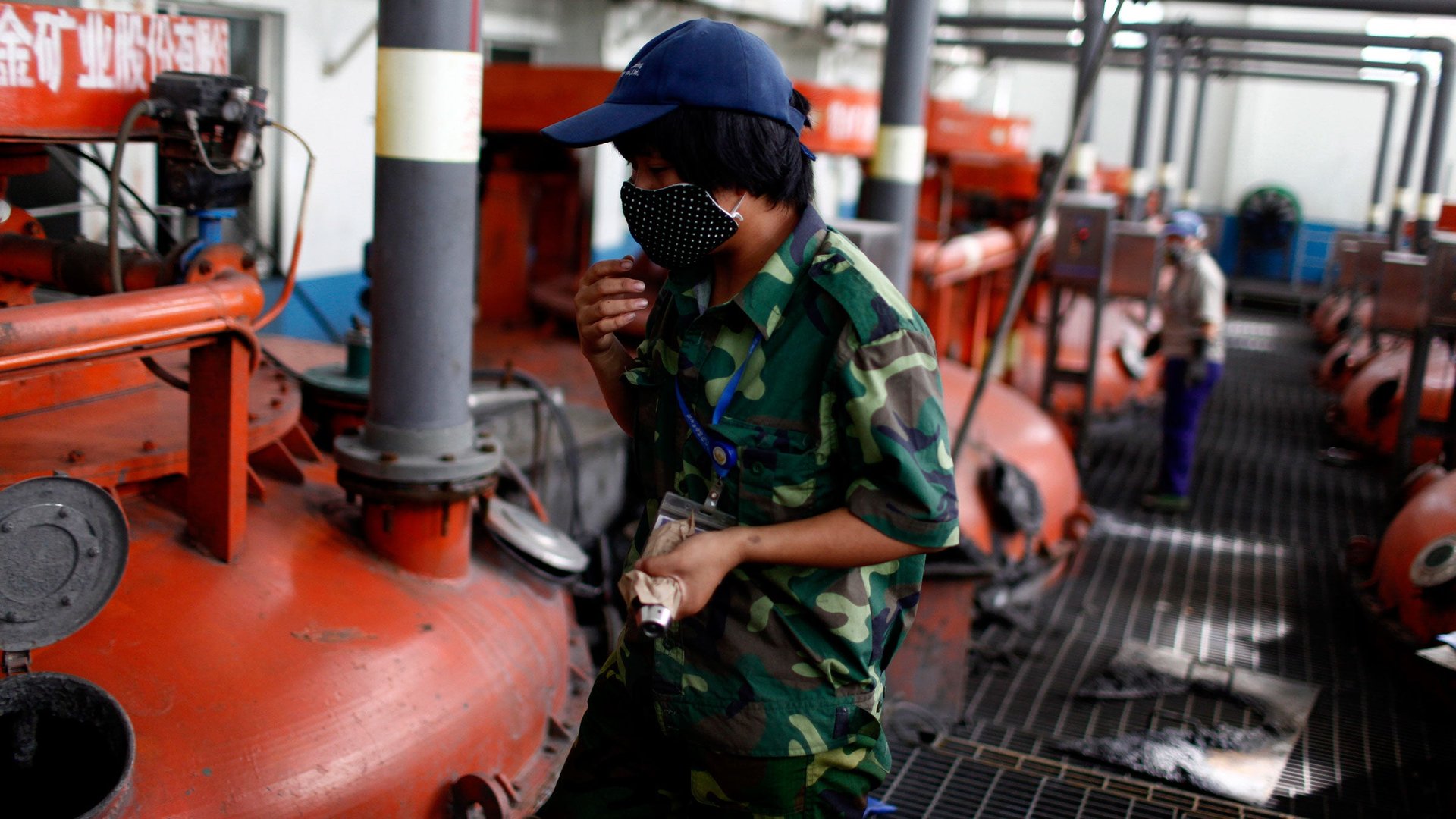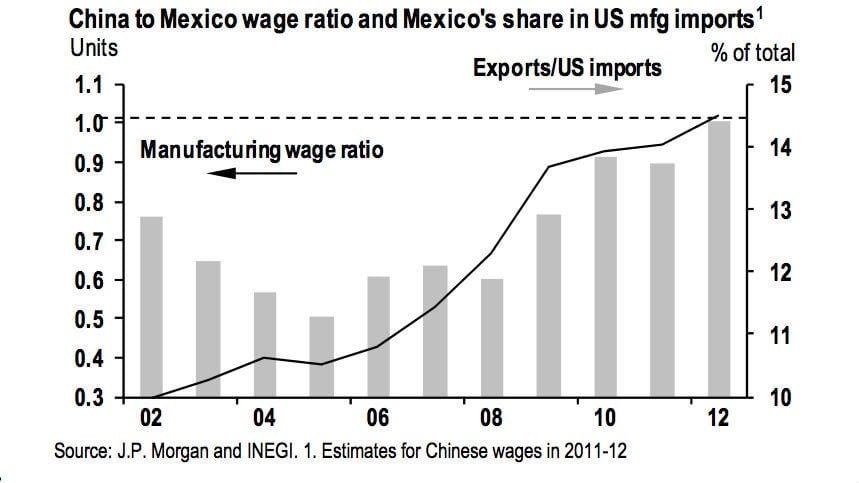China’s labor costs are now as high as Mexico’s
In 2000, Mexican manufacturing labor was more than three times as expensive as Chinese. But after of decade of stagnant wages in Mexico and a sustained rise in China, Chinese labor is no longer cheap. In fact, it costs almost the same amount to hire Mexican workers, JP Morgan economists write. That turnaround—along with other factors, such as the surging costs of transporting finished goods in recent years—helped drive Mexico’s share of US manufacturing imports to nearly 15% in 2012, up from a 10-year low of 11.2% in 2005. Along with a yuan that remains quite strong by the standards of the last two decades, the rising cost of Chinese workers is another headwind for the export sector in the People’s Republic. On the flip side, those workers’ rising wages have helped make consumer spending in China a bit more resilient. For instance, retail sales bounced a better-than-expected 14.2% in September, compared to the prior year. That’s a welcome sign for those hoping to see the global economy emerge from the Great Recession with more balance between emerging-market producers and developed-market consumption.



In 2000, Mexican manufacturing labor was more than three times as expensive as Chinese. But after of decade of stagnant wages in Mexico and a sustained rise in China, Chinese labor is no longer cheap. In fact, it costs almost the same amount to hire Mexican workers, JP Morgan economists write. That turnaround—along with other factors, such as the surging costs of transporting finished goods in recent years—helped drive Mexico’s share of US manufacturing imports to nearly 15% in 2012, up from a 10-year low of 11.2% in 2005. Along with a yuan that remains quite strong by the standards of the last two decades, the rising cost of Chinese workers is another headwind for the export sector in the People’s Republic. On the flip side, those workers’ rising wages have helped make consumer spending in China a bit more resilient. For instance, retail sales bounced a better-than-expected 14.2% in September, compared to the prior year. That’s a welcome sign for those hoping to see the global economy emerge from the Great Recession with more balance between emerging-market producers and developed-market consumption.